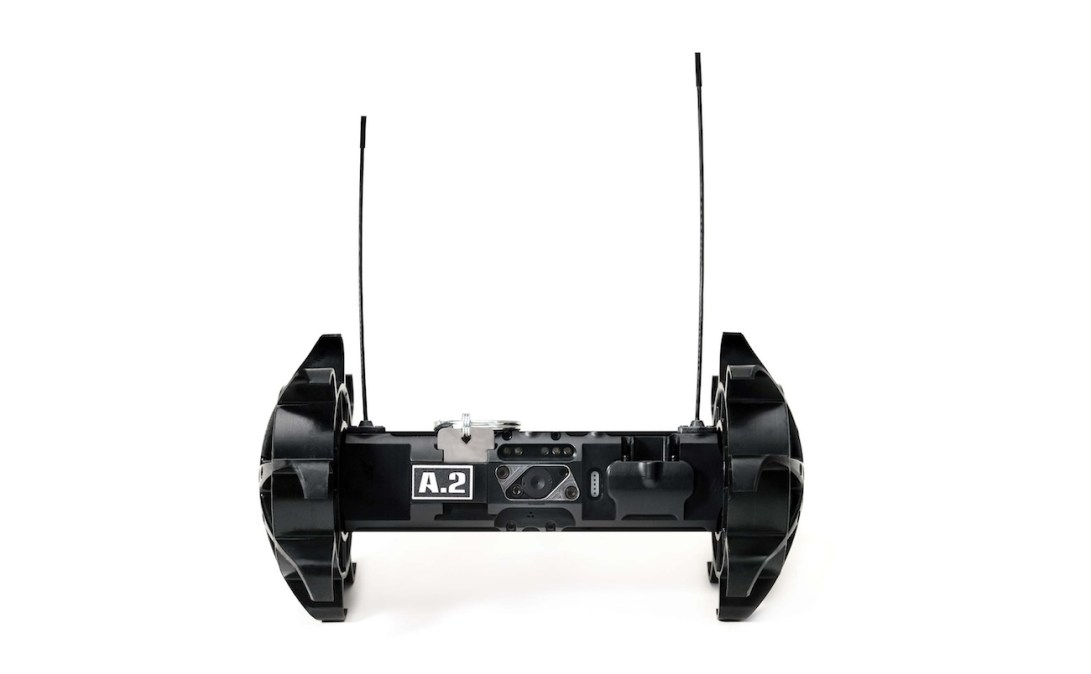NYPD buys 14 military-grade ‘throw bots’

In the latest move to expand its use of robotic policing technologies, the New York City Police Department this summer spent nearly a quarter million dollars on 14 military-grade “throw bots.”
The department entered a contract with ReconRobotics on July 31, and spent $222,216 on the devices, according to procurement records obtained by the New York Daily News. It reported Wednesday that an unnamed NYPD official said the new robots will be used by the department’s emergency service unit “in multiple ways, such as aiding responses to barricaded subjects, emotionally disturbed individuals, and other dangerous incidents, while increasing the safety of information gathering at the scene of an emergency.”
ReconRobotics’s website advertises the Throwbot 2 as a throwable micro-robot that provides operators with instant access to real-time video and audio. It can move through structures or outdoor environments and help operators locate and identify subjects, confirm the presence of hostages and reveal room layouts.
According to the vendor, the robots are designed to withstand repeated drops from up to 30 feet onto concrete. They’re equipped with infrared light systems that automatically activate in low light.
New York City’s recent robot purchase follows several others made under Mayor Eric Adams’ administration. In April of 2023, Adams revealed the NYPD has bought two Digidogs — a four-legged robotic dog made by Boston Dynamics that can be used similarly to the Throwbots in high-risk situations such as bomb threats or hostage negotiations. City officials said the robotic dogs cost $750,000 and were paid for with asset forfeiture funds.
The city had also introduced Digidogs under former Mayor Bill de Blasio, but Adams said opposition to the technology resulted in their decommission after less than a year of use. “Digidog is out of the pound,” Adams said at last year’s press event announcing the technology’s return.
Adams also unveiled in April of last year that the NYPD had invested in a K5 autonomous security robot, which it was leasing via a six-month pilot program to use around Times Square, including in the subway station. Knightscope, the California security camera and robotics maker of the K5 robot, said it uses artificial intelligence to provide real-time incident notifications to emergency personnel. It’s also equipped with a 360-degree, eye-level video feed, 16 microphones and a license plate reader.
Along with robocops and Digidogs, New York City and the surrounding areas have also expanded drone operations over the past two years, including a program launched last summer to monitor shark activity off Long Island. This summer, the NYPD also began flying aerial drones equipped with floatation devices over city beaches to help swimmers in distress.
But some of the department’s use of drones and other surveillance technologies has drawn ire. Over Labor Day weekend in 2023, the NYPD announced it would deploy drones instead of police officers in response to complaints about large gatherings, including private events held in backyards. Privacy activists called the practice discriminatory and potentially unconstitutional.
And last December, the NYPD faced scrutiny from city council members over compliance with the 2020 Public Oversight of Surveillance Technology Act, a municipal surveillance technology transparency law, related to its use of robots.
Council members questioned the police department’s use of similar, boilerplate language in impact and use plans to deploy the Digidogs and security robots. NYPD leaders claimed the department had not filed new plans for each of the surveillance robots because they had already met the requirement by submitting plans for other, similar technologies.
“New Yorkers deserve to live in a safe and just city, and new technology of course has an important role to play in that work,” New York City Comptroller Brad Lander testified at the hearing. “However, law enforcement’s increased use of surveillance technology tools without sufficient transparency and guardrails runs the risk of exacerbating inequity, violating privacy, and eroding the public’s trust.”



